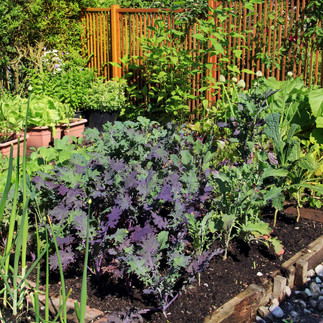Planning and Designing Your School Garden: Tips and Tricks for Getting Started
- One Planet Matters

- Apr 21, 2023
- 2 min read
Updated: Nov 1, 2023
School gardens offer a wonderful opportunity for children to learn about nature, food, and the environment. Whether you have a large plot of land or just a few planters, creating a school garden requires careful planning and design to make the most of the available space. As part of our Schools Network our team at One Planet Matters can help you through all the stages of planning, creating and maintaining your garden.

But here are some things to consider along with tips & tricks to help you get started:
Assess Your Space: Before you start designing your garden, assess the space you have available. Think about the size and shape of the area, as well as any existing features such as trees, buildings, or paths. We can arrange a visit to your school to discuss this with you.
Consider Your Goals: What do you want to achieve with your school garden? Do you want to grow food, create a wildlife habitat, or provide a space for outdoor learning? Your goals will help determine the layout and features of your garden.
Involve the Children: Get the children involved in the planning and design process. Ask them what they would like to grow and how they would like to use the space. This will help them take ownership of the garden and feel more invested in its success.
Plan Your Layout: Once you have assessed your space and goals, it's time to plan your garden layout. Think about the placement of beds, pathways, and seating areas. Consider how you can incorporate different features such as raised beds, trellises, or compost bins. One Planet Matters can help you with the creation of various elements.
Choose Your Plants: Choose plants that are well-suited to your local climate and soil conditions. Consider incorporating a mix of edible plants, flowers, and native species to create a diverse and vibrant ecosystem. One Planet Matters can also supply you with a variety of wildflowers and also mini orchards!
Create a Maintenance Plan: Maintaining a school garden requires ongoing care and attention. Create a plan for watering, weeding, and harvesting, and assign responsibilities to different members of the school community. As part of our Schools network your have access to lots of resources and expert advice to help you along the way. Our team will also revisit your site to help with maintenance.
By following these tips and tricks, together we can create a beautiful and functional school garden that supports your children's learning and development. Join our Schools Network today - It's free!














Comments